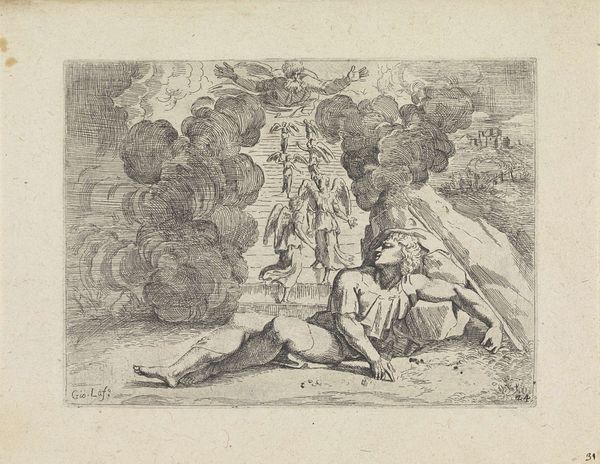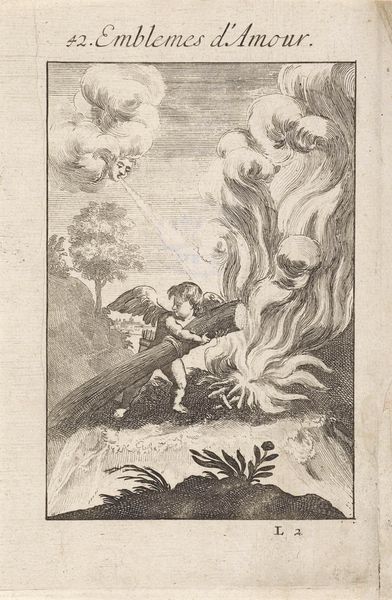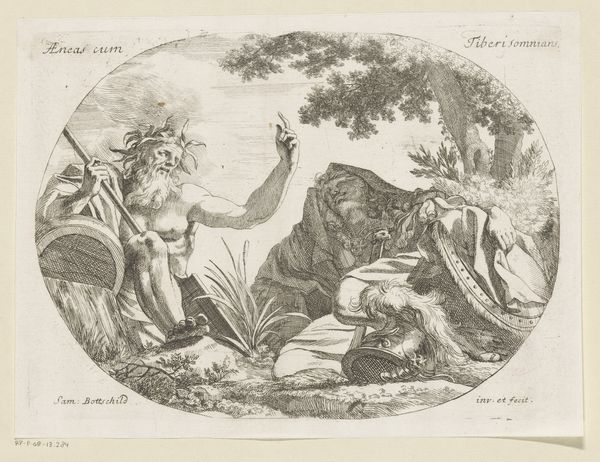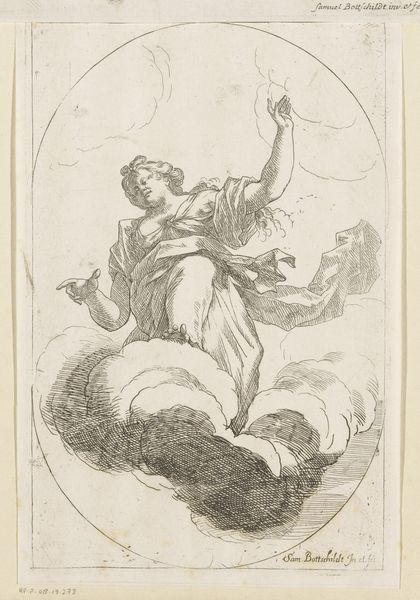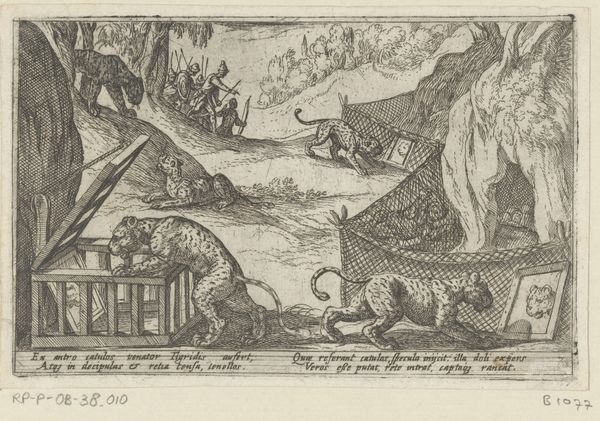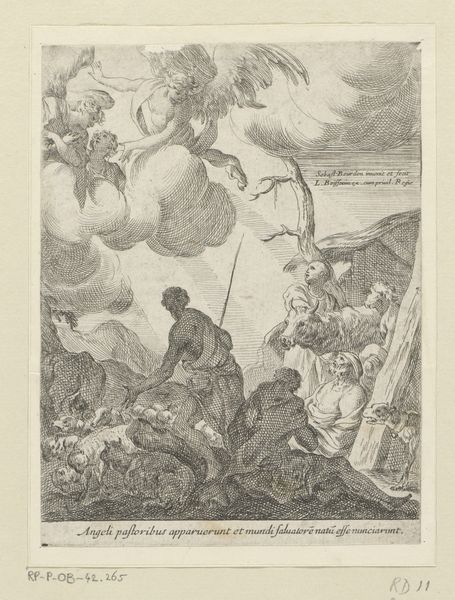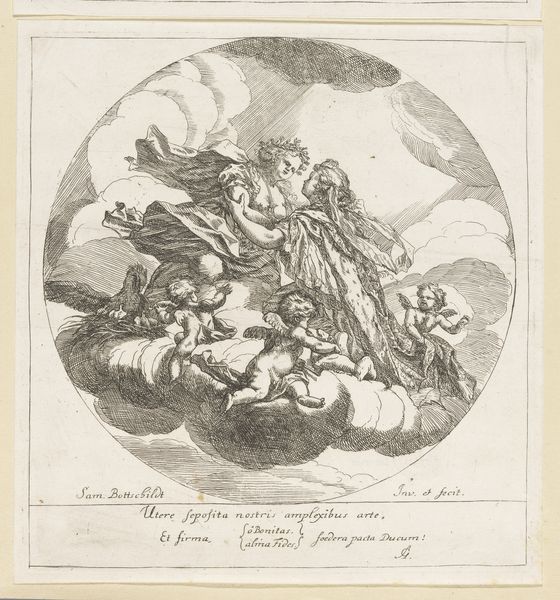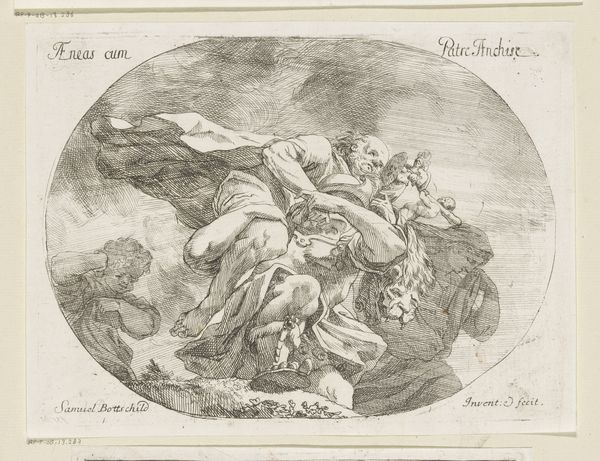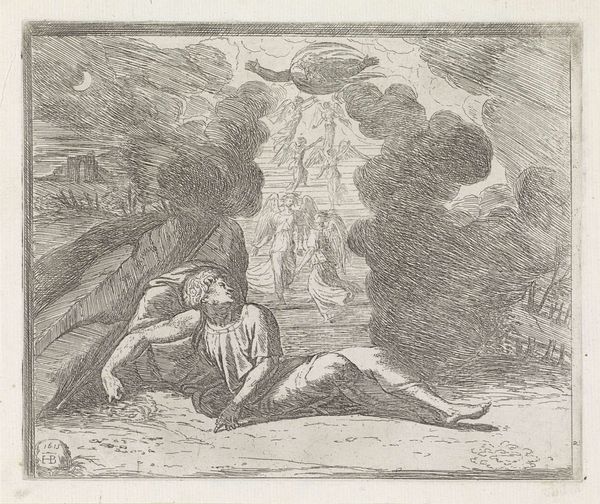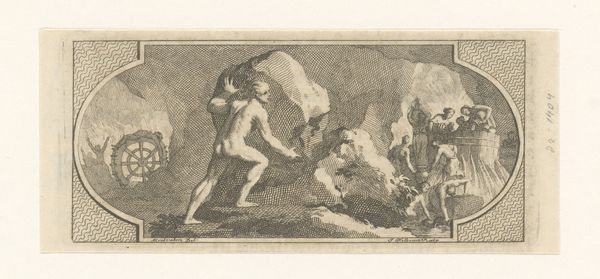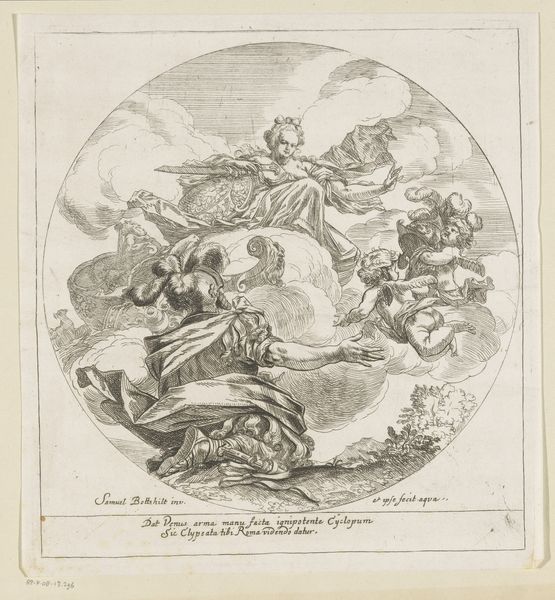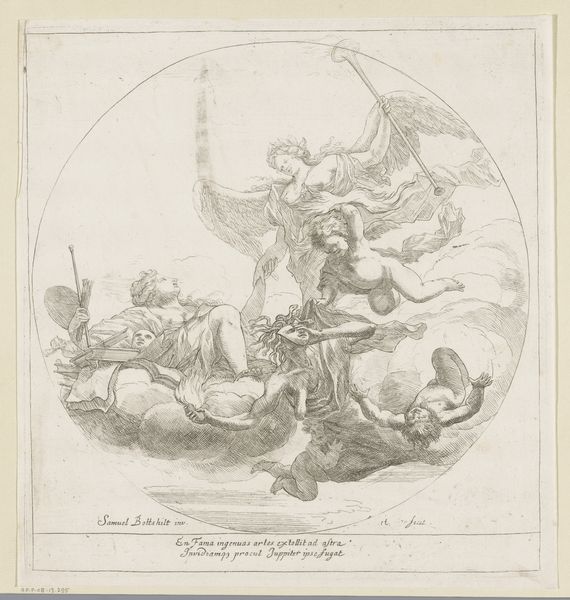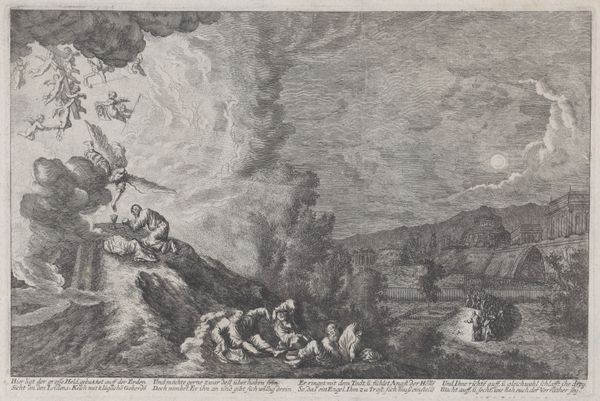
engraving
#
baroque
#
pen sketch
#
pencil sketch
#
sketch book
#
figuration
#
personal sketchbook
#
sketchwork
#
ink drawing experimentation
#
pen-ink sketch
#
line
#
sketchbook drawing
#
history-painting
#
storyboard and sketchbook work
#
sketchbook art
#
engraving
Dimensions: height 151 mm, width 203 mm
Copyright: Rijks Museum: Open Domain
Curator: This engraving from 1693, titled "Psyche voert Cerberus," or "Psyche Leads Cerberus," is the work of Samuel Bottschild. The artwork lives here at the Rijksmuseum. It presents a scene from mythology in incredible detail with only fine lines etched into the metal plate. Editor: The first impression is a sense of urgency—a swirl of darkness punctuated by bursts of light. It’s unsettling, that three-headed dog breathes smoke! What’s the feel, the texture of the paper like? It gives such an otherworldly vibe. Curator: Precisely! Bottschild used an engraving technique to make multiple copies, a common way to circulate imagery during the Baroque period. Notice how the lines not only describe form but also convey light and shadow, all achieved with carefully controlled cuts on the plate. That’s labor and craftsmanship working together. Editor: Definitely, a fascinating method. But isn't the myth itself interesting? Psyche bribing Cerberus with cake. It really humanizes, or perhaps I should say 'god-izes,' her struggle, making immortality relatable. Doesn’t the fire feel too dramatic? Like maybe the material and process overpowers this sense of fear or victory or love… Curator: But that tension is where its beauty lies! It’s a very emotional moment rendered through very precise work, a push and pull. That, in essence, embodies the very drama the Baroque period itself. Consider, too, the market demand for prints depicting morality tales—these accessible, reproducible images carried quite a bit of social currency at the time. Editor: Okay, that rings true. It's hard to separate the 'high art' of mythological painting from the more democratic, accessible world of printmaking here. They each are different expressions, born of the same historical impulse. This tiny world invites the curious to ponder not only myth but meaning, doesn’t it? The distribution allowed access to wider audience who would not have been able to see an original painting, of which is usually reserved for upper class patronage. Curator: Agreed. Next time you encounter a print, think about its journey – from the artist's hand to the printing press to homes, books, and collections. The myth lives and travels with each and every print!
Comments
No comments
Be the first to comment and join the conversation on the ultimate creative platform.
